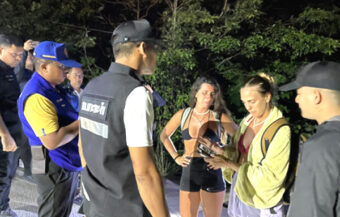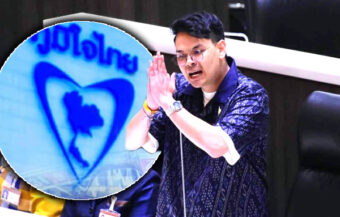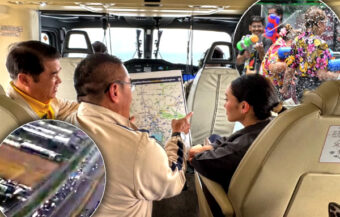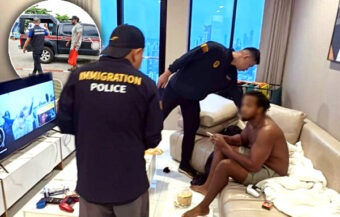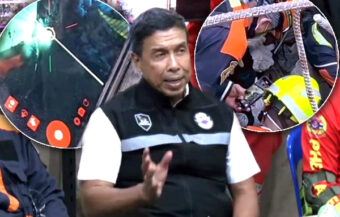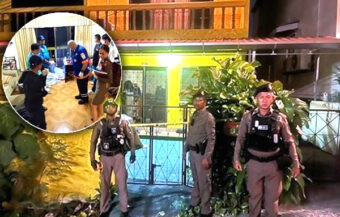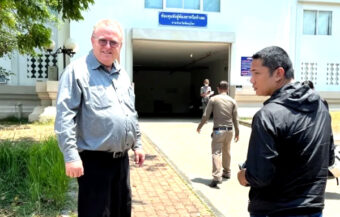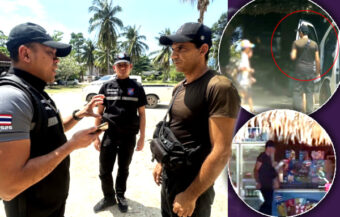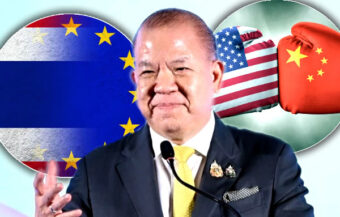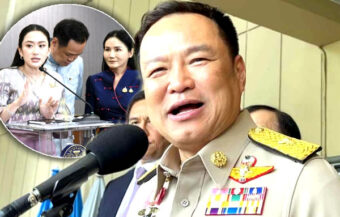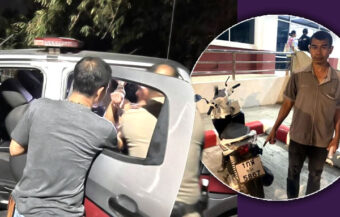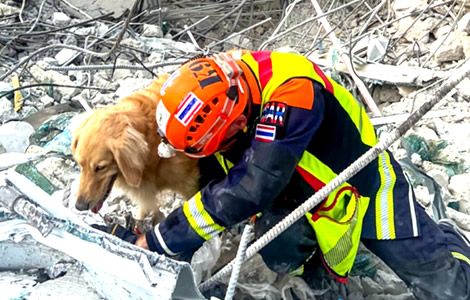Details emerging on the November 1st reopening are encouraging and appear to show a determination by the Thai Prime Minister, Prayut Chan ocha, to make the plan work for incoming foreign tourists by eliminating complications and bottlenecks.
It has emerged that the thousands of travellers from 46 countries across the world who are expected to arrive in Thailand after November 1st, will have the same freedom to travel throughout the kingdom as Thai nationals once they have passed a COVID-19 test on arrival under what Thailand’s tourism promotion agency has called ‘Travel and Go’. This will mean bypassing the complicated and demanding sandbox programmes which will now only apply to visitors on a second and third tier basis that the Tourism Authority of Thailand has labelled ‘Living in the Blue Zone’ and ‘Happy Quarantine’. On Friday, Mr Yuthasak Supasorn, the Governor of the Tourism Authority of Thailand explained how the prime minister, who is playing a key role in the reopening, ordered testing at ‘swab hubs’ near key airports welcoming these incoming ‘Travel and Go’ foreign passengers.
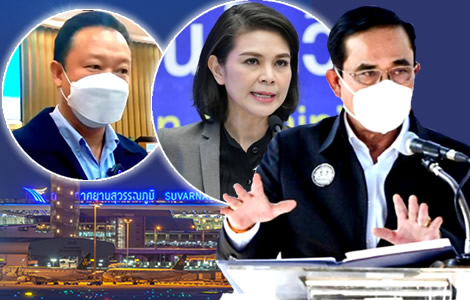
The Thai government and various agencies on Friday gave more details on the country’s reopening to foreign tourists as it steams ahead towards November 1st next with briefings from both the Centre for Covid-19 Situation Administration (CCSA) and the Tourism Authority of Thailand (TAT).
Dr Apisamai Srisangson with the CCSA outlined a few minor conditions after yesterday’s announcement that travellers from 46 countries would be allowed entry to Thailand without quarantine and under the streamlined Thailand Pass system.
46 countries green-lighted as Thailand’s tourism business is set to take off from November 1st
One condition, designed to prevent abuse, is that the passengers from these 46 countries must have stayed in the country of origin for at least 21 days before departure for Thailand.
Insurance cover reduced to $50,000 and this is expected to cover COVID-19 medical treatment
The negative COVID-19 test also must have taken place not more than 72 hours before the flight while the traveller’s fully vaccinated status or second vaccine shot must be at least 14 days old before the trip.
Passengers are also required to bring with them proof or evidence of their vaccination status.
The insurance cover required from travellers has been reduced from $100,000 to $50,000. It has not yet been clarified but previously this insurance requirement extended to COVID-19 cover.
Most incoming tourists will be expected to spend one night at their hotel awaiting a negative test result
Dr Apisamai also explained more about the COVID-19 test required from passengers on arrival in Thailand.
It is being reported that Prime Minister Prayut Chan ocha, who is driving the reopening, has ordered that these tests should not be taken at airports but at designated ‘swab hubs’ being established in Bangkok and other arrival destinations.
‘Swab hubs’ as more hotels in Bangkok seek Safety and Health Administration (SHA) Plus status ahead of the reopening and to avoid congestion
Speaking to Thai media in the last 24 hours, Yuthasak Supasorn of the Tourism Authority of Thailand (TAT), explained that most travellers entering Thailand through designated airports will be expected to stay overnight at their hotel on the first night.
Seven airports designated to cater for ‘Travel and Go’ incoming passengers, COVID-19 test will cost no more than ฿2,000 assures TAT boss Yuthasak
It has also emerged that the new fastrack category of visitors must enter Thailand through commercial flights landing at Suvarnabhumi, Don Mueang, Chiang Mai, Phuket, Samui, U-Tapao and Buri Ram airports.
Mr Yuthasak said the first night’s hotel reservation will include the cost of the COVID-19 RT-PCR test and that it will not exceed ฿2,000.
‘You have to look at the people who come as tourists. Most book accommodation already. Therefore, the reservation for the first night of accommodation includes the cost of testing for COVID-19 by RT-PCR method, which will try not to exceed ฿2,000. They must stay in Bangkok for one night before travelling for 3 hours, as for those who land at Suvarnabhumi Airport and go to Pattaya, because it does not exceed 2 hours and go to check the infection in a hotel that must have a contract hospital. General Prayut Chan-o-cha, Prime Minister, did not want the virus to be tested at the airport for fear of congestion. In the case of people who land at Phuket Airport, you can go to stay in a hotel in Phang Nga because it doesn’t take more than 2 hours, but you can’t go to Krabi,’ said Mr Yuthasak as he gave some insight into how the scheme will operate.
New details honour PM’s promise on October 11th that fully vaccinated foreign arrivals from approved countries can travel freely just as Thai nationals
What has been clarified on Friday is that fully vaccinated travellers from the 46 approved countries will not be subject to further restrictions once they test negative and can travel within Thailand with the same freedom as any Thai national.
On Friday, in its announcement, the Tourism Authority of Thailand (TAT), an organisation known for its propensity for jargon and catchphrases, labelled this primary programme which will be the key driver of foreign tourism in the next few months as ‘Travel and Go’.
This was a key pledge from Prime Minister Prayut Chan ocha in his breakthrough October 11th announcement which took the country and indeed the tourism promotion agency itself, by surprise.
On Friday, the TAT did come forward to explain that there were two other programmes in its welcome programme for all foreign travellers.
TAT explains its ‘Living in the Blue Zone’ and ‘Happy Quarantine’ programme for a limited number of passengers subject to sandbox and quarantine rules
The second tier programme, ‘Living in the Blue Zone’, is aimed at fully vaccinated travellers from countries not on the list who will still enjoy a welcome without quarantine but must restrict their travel to 17 provinces or areas or what TAT calls the ‘Blue Zone’.
This zone will be expanded to up to 55 provinces over the coming months according to tourism executives.
Visitors will also be subject to a second but lower-cost antigen COVID-19 test on either day six or seven.
For non-vaccinated arrivals, TAT also extends the welcome mat with a programme called ‘Happy Quarantine’ with a 10-day quarantine period at an alternative quarantine hotel and testing during this period before the visitor is allowed to travel on.
Join the Thai News forum, follow Thai Examiner on Facebook here
Receive all our stories as they come out on Telegram here
Follow Thai Examiner here
Further reading:
46 countries green-lighted as Thailand’s tourism business is set to take off from November 1st
Bright lights may be turned on again for foreign tourism as hated Certificate of Entry is to be axed
TAT boss: quarantine remains for 1 day to test all visitors, no going back to old tourism pub scenes
PM’s reopening order-only the beginning of the end of this cataclysmic crisis for Thai tourism
Tourism chief again plans to open up Thailand’s rock bottom tourism industry to cryptocurrencies
Dysfunction hits reopening of Thailand to tourism as Health Minister dismisses October 1st date
New normal tourism may see foreign and local tourists segregated at Pattaya tourist attractions
Rising prospect of GDP contraction for 2021 may see government breach the legal public debt limit
Economic fears rising as Thailand faces a bigger crisis than 1997 with rising job losses and debt
Baht falling with confidence in Thailand waning as foreign tourism closure and virus drive funds out
Central bank to lower GDP growth forecast as its attention turns to private sector debt management
Loan bill passes but Thai economic prospects are not bright with a 1.8% 2021 GDP gain predicted
IMF urges government to loosen nation’s purse strings as finances tighten with the tax take down
Failure to pass the ฿500 billion borrowing decree could lead to the dissolution of parliament
Industry leaders and central bank all warn that foreign tourism must return to avoid a collapse
Fact – only 6,556 visitors arrived in Thailand last month compared to 3.95 million in December 2019
Desperate foreign tourism business concerns are clinging to straws as they try to survive the crisis
Challenge of the virus and closure to tourism leads to major long term changes in the Thai economy
Finance Minister says economy must pivot away from tourism with a switch to S-Curve industries
Strengthening baht predicted as investors bet on a reopening of Thailand to mass tourism in 2021
Thailand facing a credit crunch as 3rd virus wave craters the kingdom’s economic recovery plans
3rd virus wave now spells not just economic loss but financial danger as kingdom’s debt level rises
Still time to avoid lockdown says Health Minister as 3rd virus wave dwarfs all infections to date
Thai economy is still in reverse despite rising confidence and a virus threatening a 3rd wave
Reopening of Phuket still not officially approved although it is the ideal test for a broader move
Minister urged not to be afraid to borrow in 2021 as fears grow for a quick foreign tourism revival
Economy to rebound as the year progresses driven by exports and a return of mass foreign tourism
Door closing on quick foreign tourism return as economic recovery is delayed to the end of 2022
Fact – only 6,556 visitors arrived in Thailand last month compared to 3.95 million in December 2019
Desperate foreign tourism business concerns are clinging to straws as they try to survive the crisis
Finance Minister says economy must pivot away from tourism with a switch to S-Curve industries

